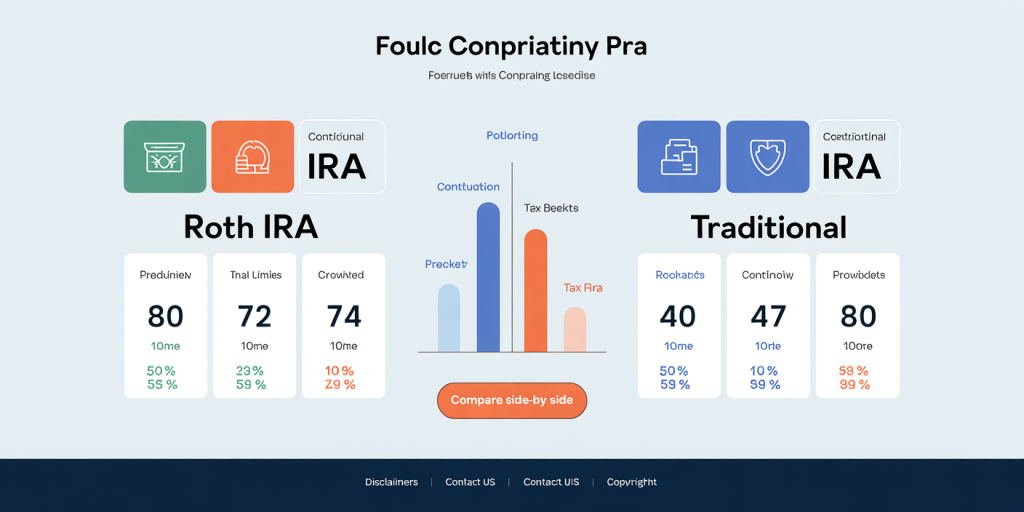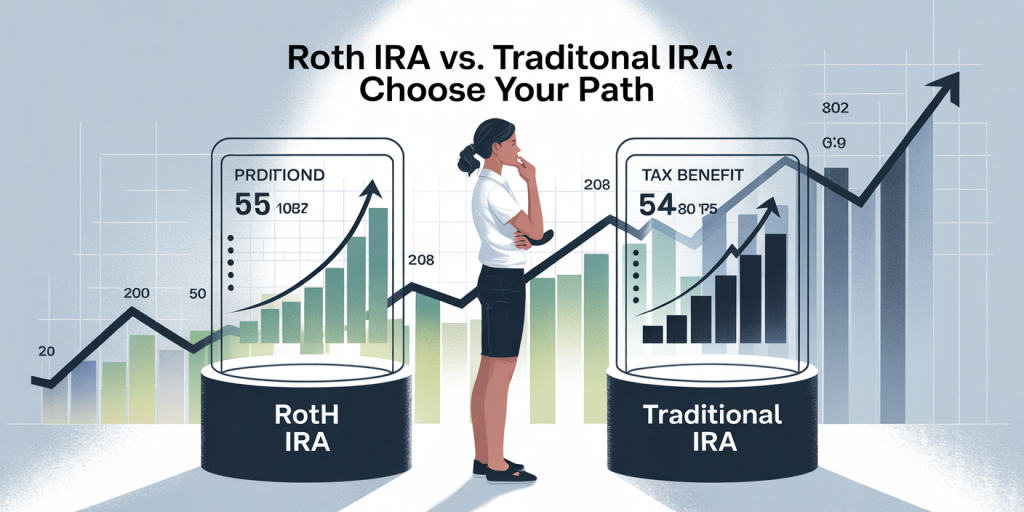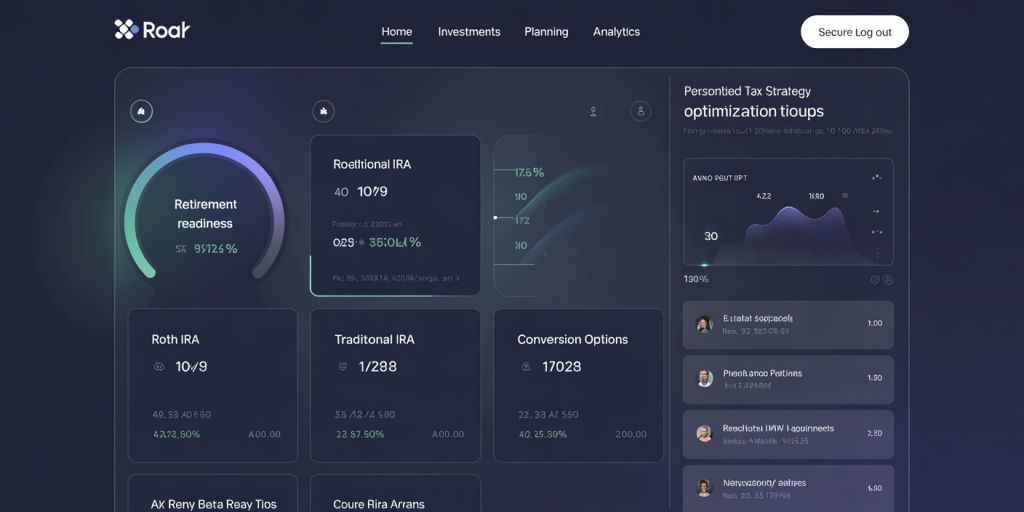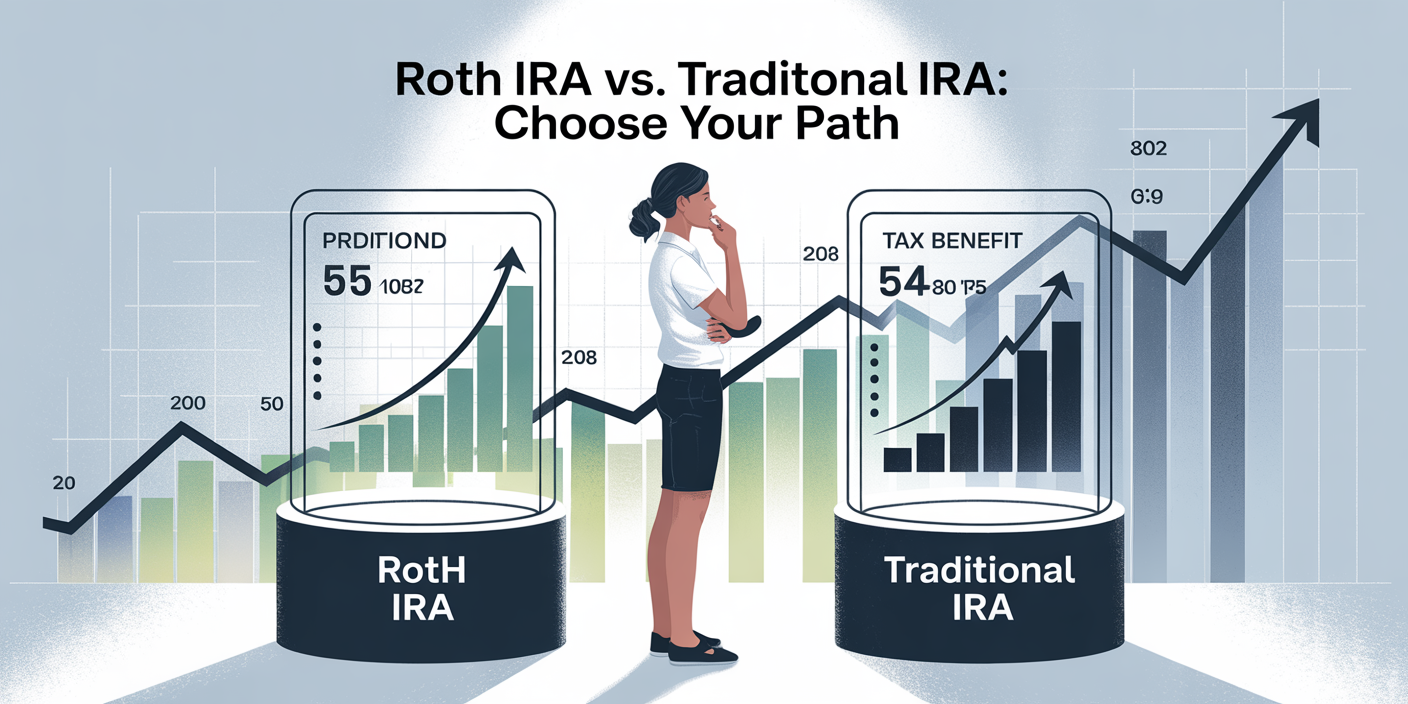When planning for retirement, individual retirement accounts (IRAs) play a crucial role in helping people save and grow their money tax efficiently. Among the most popular IRA options in the United States are Roth IRAs and Traditional IRAs. Both offer unique advantages and drawbacks, tailored to different financial situations and retirement goals. Understanding the key differences between these two types of IRAs allows investors to make informed decisions that will optimize their long-term wealth and retirement security.

In this article, we will explore the essential distinctions between Roth IRA and Traditional IRA accounts, with practical examples, relevant data, and comparative tables to clarify these differences. We will also delve into eligibility, tax implications, withdrawal rules, and suitability to different financial profiles. This comprehensive guide is designed to help investors, from beginners to experienced, navigate their retirement planning more effectively.

Tax Treatment: Contributions and Withdrawals
One of the most significant differences between Roth IRA and Traditional IRA lies in their tax treatment. For Traditional IRAs, contributions may be tax-deductible depending on your income level, filing status, and whether you or your spouse participate in an employer-sponsored retirement plan. As a result, Traditional IRA contributions reduce your taxable income in the year they are made. However, the withdrawals during retirement are taxed as ordinary income.
In contrast, Roth IRA contributions are made with after-tax dollars, meaning there’s no immediate tax benefit when you contribute. However, qualified withdrawals from a Roth IRA are completely tax-free, including both contributions and earnings, provided you meet certain criteria such as being 59½ or older and having the account for at least five years.
Example: Jane, a 35-year-old software engineer earning $75,000 annually, chooses between contributing $6,000 a year to a Roth IRA or a Traditional IRA. If she invests in a Traditional IRA, her taxable income for the year could decrease by $6,000, reducing her tax bill immediately. If she instead opts for a Roth IRA, she pays taxes on the $75,000 earned but enjoys tax-free income during retirement. If she anticipates being in a higher tax bracket at retirement, the Roth IRA could be more advantageous.
| Aspect | Traditional IRA | Roth IRA |
|---|---|---|
| Contribution Tax Treatment | Potentially tax-deductible | Contributions are after-tax |
| Withdrawal Tax Treatment | Taxed as ordinary income | Tax-free if qualified |
| Ideal for | Those expecting lower taxes at retirement | Those expecting higher taxes at retirement |
According to IRS data, Traditional IRA contributions reached over $92 billion in 2019, showcasing their popularity among taxpayers seeking immediate tax relief. Meanwhile, Roth IRAs are growing steadily, particularly among younger investors who benefit from long-term tax-free growth (Investment Company Institute, 2021).

Eligibility and Income Limits
Eligibility requirements and income limits also present distinct differences between Roth and Traditional IRAs. Anyone under 70½ with earned income can contribute to a Traditional IRA, though the ability to deduct those contributions may phase out at higher incomes if you or your spouse are covered by a workplace retirement plan.
Roth IRAs come with stricter income limits. For 2024, individuals with a modified adjusted gross income (MAGI) exceeding $153,000 (single filers) or $228,000 (married filing jointly) cannot contribute directly to a Roth IRA. Below these thresholds, contributions are gradually phased out.
For example, Mark and Linda, married taxpayers filing jointly, earn a combined MAGI of $230,000, slightly above the Roth IRA limit. They can’t contribute directly to a Roth IRA but might consider using a “backdoor Roth IRA” strategy, where they contribute to a Traditional IRA and then convert those funds to a Roth IRA. This tactic requires careful tax planning but offers high earners access to Roth accounts.
| Feature | Traditional IRA | Roth IRA |
|---|---|---|
| Age Limit on Contributions | Up to 70½ years old | No age limit |
| Income Limits for Contributions | None for contributions; deduction phases out with high income when covered by a plan | Phased out above $138,000 (single) or $218,000 (married) (2024 figures) |
| Eligibility to Contribute | Earned income regardless of income | Earned income below MAGI thresholds |
Understanding these eligibility nuances helps investors target accounts most suitable for their income level and retirement timeline.
Withdrawal Rules and Penalties
Withdrawal rules between Roth and Traditional IRAs vary significantly and affect how and when investors can access their funds without penalties. In Traditional IRAs, withdrawals taken before age 59½ generally incur a 10% early withdrawal penalty in addition to ordinary income taxes, with exceptions such as first-time home purchases, qualified higher education expenses, or disability. Once the account holder reaches 72, Required Minimum Distributions (RMDs) must begin, forcing investors to withdraw a minimum amount annually, whether needed or not.
Roth IRAs offer more flexible withdrawal conditions. Contributions, which are made after taxes, can be withdrawn at any time, tax- and penalty-free. However, earnings on contributions become tax-free only if the account is at least five years old and the owner is at least 59½, or if certain qualifying events occur. Additionally, Roth IRAs do not have RMD requirements during the original owner’s lifetime, giving them an advantage for estate planning.
Consider the case of Sarah, age 60, who has a Roth IRA she opened 15 years ago. She can withdraw both contributions and earnings tax-free and penalty-free. Conversely, if Sarah had a Traditional IRA, her withdrawals would be taxable, and she faced RMDs starting at 72, potentially pushing her into a higher tax bracket.
| Withdrawal Aspect | Traditional IRA | Roth IRA |
|---|---|---|
| Early Withdrawal Penalty | 10% plus income tax on amount withdrawn before age 59½ | Contributions can be withdrawn anytime tax- and penalty-free; earnings subject to rules |
| Required Minimum Distributions | Mandatory after age 72 | No RMDs during owner’s lifetime |
| Exceptions | Several exceptions to penalty exist | Similar exceptions apply with some differences |
Investment Growth and Long-Term Benefits
Both Roth and Traditional IRAs offer extensive investment options including stocks, bonds, mutual funds, exchange-traded funds (ETFs), and others. The real distinction emerges in how investment gains are treated throughout the account’s life and upon withdrawal.
Traditional IRAs grow tax-deferred. This means you don’t pay taxes on dividends, interest, or capital gains as long as the money remains in the account. Taxes are paid only when withdrawing funds. Roth IRAs, on the other hand, allow for tax-free growth. Once contributions are made, all earnings, whether from dividends, interest, or capital appreciation, can be withdrawn tax-free under qualifying rules.
Long-term performance can significantly impact retirement savings. A study by Morningstar found that, over 30 years, a $5,000 annual contribution averaging 7% returns grows to about $568,000 in a Roth IRA, assuming tax-free withdrawals. In a Traditional IRA, the growth might be similar pre-withdrawal, but the ultimate after-tax value depends on the tax rate applied during retirement withdrawals.
Example: Tom expects to retire in 25 years and estimates his tax rate will rise from 22% today to 28% in retirement. A Roth IRA becomes attractive since he pays taxes now at 22%, shielding future growth from the 28% tax rate. Conversely, if Tom expects his tax rate to fall, a Traditional IRA may be better.
Suitability for Different Investor Profiles
Deciding between Roth and Traditional IRAs depends heavily on personal circumstances, including current versus expected retirement tax brackets, income levels, and retirement age.
Younger Investors or Those Expecting Higher Future Taxes: Roth IRAs are often the preferred choice. Since these investors likely have lower incomes and tax rates now, paying taxes upfront is more advantageous. They benefit from decades of tax-free growth, making Roth IRAs an excellent tool for wealth accumulation over time.
Older Investors or Those Expecting Lower Retirement Income: Traditional IRAs may be better for those who want the immediate tax deduction and expect to pay less tax during retirement. For example, a 55-year-old nearing retirement with a high current income but expecting Social Security and pension to replace a substantial portion of income at lower tax rates can benefit from the upfront deduction.
High Earners: As discussed previously, high earners may face income limits restricting Roth IRA contributions but can still benefit from Traditional IRAs and possibly Roth conversions through backdoor strategies.
| Investor Profile | Recommended IRA Type | Reason |
|---|---|---|
| Young, lower tax bracket, long timeline | Roth IRA | Pay taxes now, enjoy tax-free growth |
| Near retirement, higher tax bracket now | Traditional IRA | Get immediate tax relief, pay taxes at lower rate later |
| High income surpassing Roth limits | Traditional IRA + Backdoor Roth | Access to Roth benefits via conversion strategies |
Looking Ahead: Future Trends and Considerations
Changes to tax laws, retirement demographics, and investment technology continue to shape the retirement savings landscape. The Biden administration and other policymakers have proposed adjustments to IRA rules, including changes to income limits and RMD requirements, which could impact the relative benefits of Roth versus Traditional IRAs.
Additionally, increasing longevity means retirees will spend more years retired, making tax-free compounding growth and withdrawal flexibility of the Roth IRA more attractive for many. Millennials and Gen Z investors, with decades to contribute and grow assets, are gravitating toward Roth accounts, increasing the demand and availability of Roth-based retirement products.
Emerging fintech platforms also facilitate easier management and conversions between IRA types, helping investors optimize tax strategies dynamically. We expect ongoing innovation to simplify the decision-making process and provide more personalized advice on maximizing IRA benefits.
Investors should keep abreast of regulatory developments and consider consulting a financial advisor to adapt their retirement strategy to evolving markets and tax environments. Being proactive with account choices today can unlock significant financial benefits tomorrow.
This comprehensive analysis underscores the importance of evaluating both Roth and Traditional IRAs in the context of personal goals, tax situations, and retirement timelines. While no one-size-fits-all answer exists, understanding these fundamental differences empowers investors to build more effective retirement portfolios tailored to their future needs.

Deixe um comentário